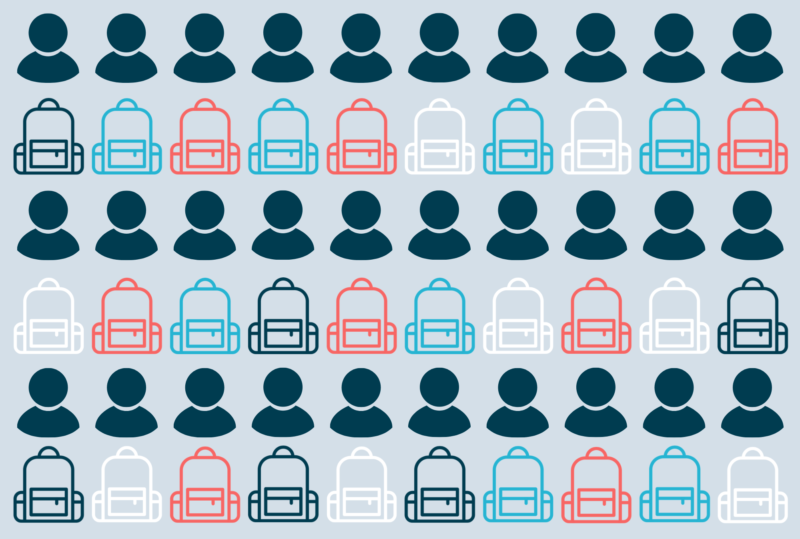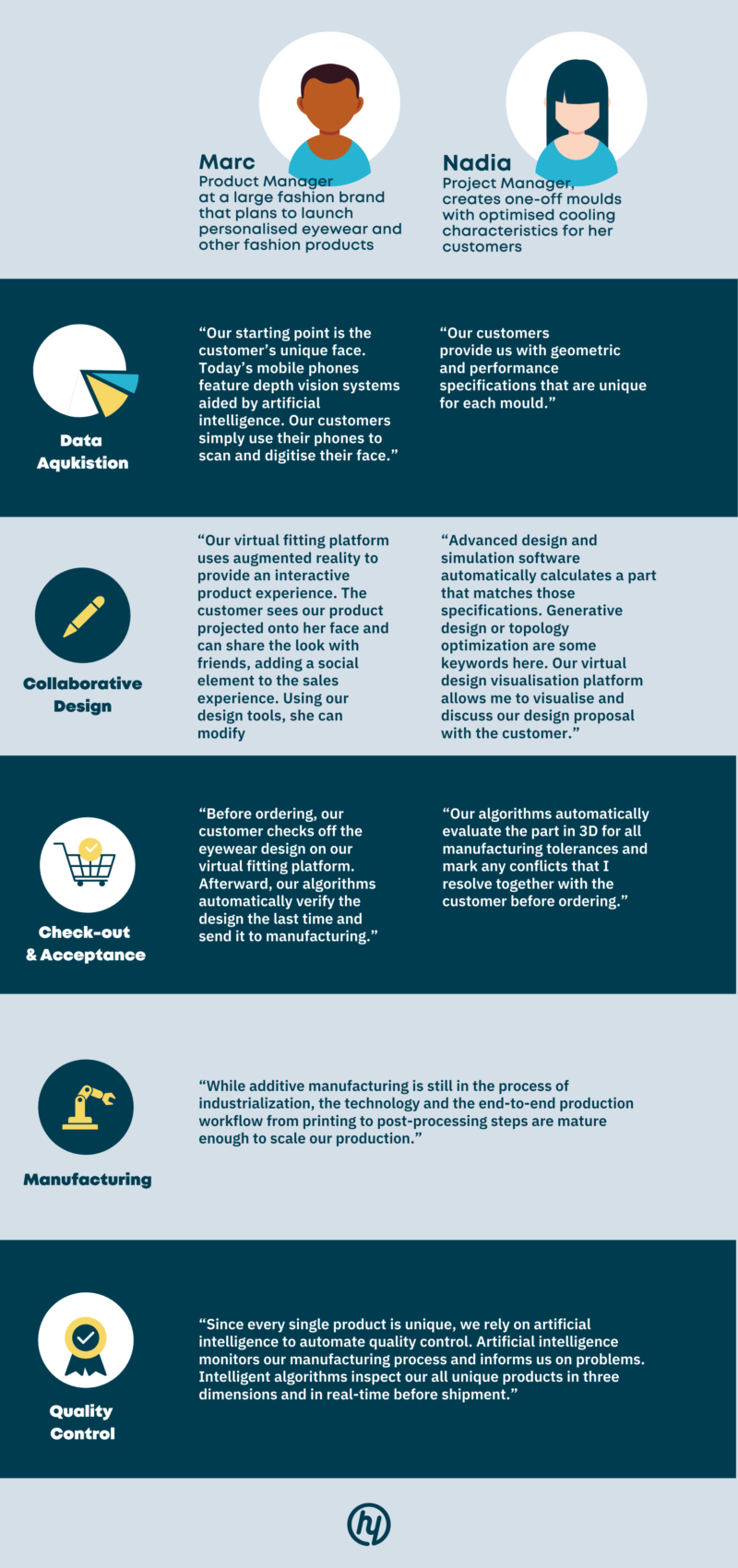Fighting commoditization with digitalization and mass-customization

Commoditization and margin pressure are key challenges for many brands and manufacturing businesses. Global competition is eroding competitive advantages for mass-produced industrial and consumer products. More and more market players emerge that can supply the same product with the quality required at a similar or even better cost. The high maturity of many products means that the traditional response of adding new functionalities and upping quality even further is reaching a limit: improvements in the product do not create corresponding value for the customer anymore, resulting in the commoditization of the product.
Mass-customization of consumer and industrial products is a path to creating new competitive advantages and fighting commoditization. Customization increases the value of the product to the individual consumer or industrial customer. For example, customized eyewear is adapted in shape to the customer’s face and design to the customer’s taste. In industry, the cooling properties of molds are customized to the specific application. Mass refers to the ability to customize at scale. Mass-customisation is a key objective of Industry 4.0, where it is also known as lot-size-one production.
Launching customized products means redefining the relationship with your customer. Customization requires exchanging data with the customer: this data could be the shape of a face or cooling requirements. The customer is not a passive recipient of the product anymore. She is an active participant in the interactive design process of every single product. The foundation of customized products is an exchange of data, leading to digitalization and new digital business models.
Business in both consumer and industrial sectors need to respond by transforming on these three levels:
- Transform the business model: mass-customization is fundamentally different from mass-production, touching all aspects of a business’s operation
- Implement new technologies:
- Physical: manufacturing technologies like additive manufacturing intrinsically support mass-customization at no additional cost
- Digital: acquisition and processing of data as well as interaction with the customer require new tools, many of which are reaching maturity now
- Evolve corporate culture: business model transformation and new technologies require a shift in mindset within the organization
The technology for mass-customization is ready
Our focus in this article is the second level, new technology. The physical side – manufacturing the actual product – typically overlaps with the strengths and expertise of manufacturing businesses. The digital framework to launch customized products at scale, however, is often a new challenge. What digital tools are already out there and how mature are they? With the following two exemplary customer journeys, we want to showcase how digital technology available today supports the customer journey for customized products.

As the digital and physical technology framework is becoming more mature, many businesses are in the process of implementation or have already specific parts of the framework in operation. In the medical device industry, surgical guides, now a standard product by most orthopedic companies, or Smile Direct Club’s dental aligners are examples of mass-customized medical products. Eyewear, specifically frames, sees increased traction, with printed frames by Götti worn by Oprah Winfrey and Materialise investing in virtual try-on platform Ditto. In the industrial space, tooling solutions like HP’s molded fiber, Conflux Technology’s heat exchangers, conformal cooling molds, or manufacturing fixtures turn customer-specific use cases into data-heavy, (semi-)customized products.
Is it time to take the next step?
While the underlying technological foundations – such as additive manufacturing, artificial intelligence, augmented reality, virtual fitting, or collaborative virtual design – are relatively new, they are successfully deployed for consumer and industrial products alike. The key challenge for businesses is the absence of a one-stop solution, requiring businesses to partner and select an ecosystem approach to source, develop and deploy the required end-to-end solution.
Businesses that master the digital transformation of their business model and the implementation of these new technologies are rewarded with a strong knowledge- and data-driven differentiation as well as a head-start into Industrie 4.0.
Do you have any suggestions, comments or questions? Or would you like to take the next step in mass-customization and new digital business models?


